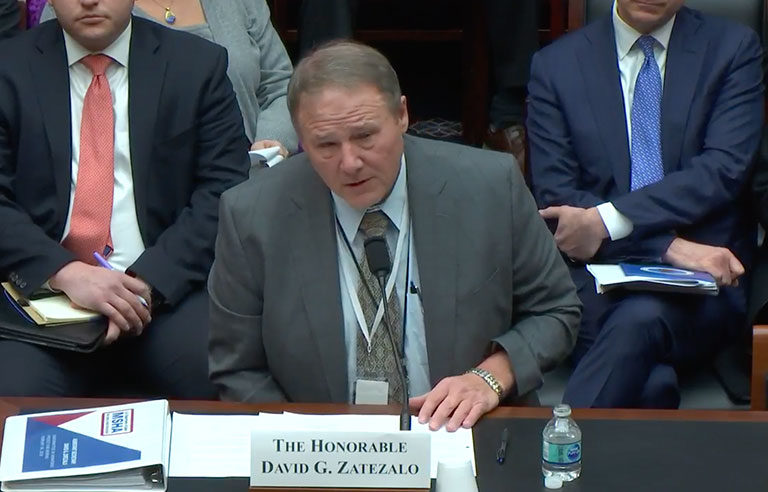No changes to coal mine dust regulation forthcoming, MSHA leader tells House subcommittee

Washington — The Mine Safety and Health Administration has no immediate plans to change its regulation on respirable dust in coal mines, MSHA administrator David Zatezalo said Feb. 6 during a hearing before the House Workforce Protections Subcommittee.
The latest regulatory agenda from the Trump administration, released Dec. 14, designated the Regulatory Reform of Existing Standards and Regulations; Retrospective Study of Respirable Coal Mine Dust Rule as a deregulatory action.
In his testimony, Zatezalo said the required study was included as part of the 2014 regulation, beginning in February 2017, but was delayed for undisclosed reasons. The former mining executive gained Senate confirmation for his current role Nov. 15.
“I can’t tell you why it was listed as a deregulatory item unless it has something to do with the frequency of the [personal dust monitor] sampling,” Zatezalo said in response to a question from Rep. Alma Adams (D-NC).
The hearing occurred on the same day the Journal of the American Medical Association published a NIOSH research letter stating that the agency had identified 416 former coal miners who had progressive massive fibrosis – the most severe form of black lung disease – in a study of three federally funded clinics in southwest Virginia.
A National Public Radio investigation in December 2016 found 962 cases from 11 clinics in four states over a 10-year period. That story stated that a factor in the steep rise of progressive massive fibrosis since the late 1990s was the need to extract “thinner seams of coal” from rocks, work that can result in more silica dust inside mines.
The 2014 mine dust regulation reduced the exposure limit from 2.0 milligrams per cubic meter of air to 1.5 milligrams per cubic meter at underground and surface coal mines. Operators also are required to use continuous personal dust monitors.
“The personal dust monitors seem to be working very effectively,” Zatezalo said. “They’ve been accepted by the mine workers. They’ve been accepted by the mine operators, and they’re doing their job.”
Reps. Bobby Scott (D-VA) and Mark Takano (D-CA) pointed out that MSHA’s silica exposure limit is higher than OSHA’s current standard. Zatezalo said he is awaiting the results of a National Academy of Sciences study, due in March, before making any decisions on an even lower exposure limit. He told Scott that MSHA’s sampling has “generally” showed mine operators are complying with the current dust exposure limit.
The ultimate results of the exposure limit statistics on progressive massive fibrosis or black lung might not be seen for 10 years because of the generally accepted latency period for the diseases, Zatezalo said.
He said another part of the latest regulatory agenda, which gave stakeholders the opportunity to offer suggestions on rule changes, has brought nothing that would lead him to alter any regulations, adding that he may seek to update some regulations in the future.
Zatezalo said powered haulage safety is one of the points of emphasis for MSHA this year, citing statistics showing that 43 percent of the 28 mining deaths in 2017 were linked to powered haulage.
Post a comment to this article
Safety+Health welcomes comments that promote respectful dialogue. Please stay on topic. Comments that contain personal attacks, profanity or abusive language – or those aggressively promoting products or services – will be removed. We reserve the right to determine which comments violate our comment policy. (Anonymous comments are welcome; merely skip the “name” field in the comment box. An email address is required but will not be included with your comment.)

